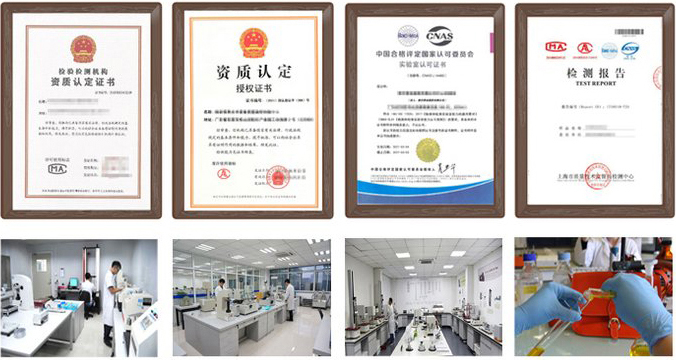Artificial Bezoar DetectionHow to apply for a report? What items need to be tested? We will conduct testing and evaluation in strict accordance with the standards. We can also provide personalized testing plans and reports according to your needs.
The detection of artificial bezoar is a complex process, which mainly includes component analysis, purity detection, heavy metal content determination, and microbial limit inspection. The following are some specific methods for detecting artificial bezoar:
1. Component analysis
Component analysis aims to confirm whether the main active ingredients in artificial bezoar meet the requirements. Common component analysis methods include:
High-performance liquid chromatography (HPLC): Using the principle of liquid chromatography, different substances are separated by the difference in distribution coefficients between the stationary phase and the mobile phase, and then detected by the detector, so as to achieve quantitative analysis of various components in artificial bezoar.
Gas chromatography (GC): For volatile components, gas chromatography can be used for analysis. This method uses the difference in distribution coefficients between the gas phase and the stationary phase for separation and detection by the detector.
UV-visible spectrophotometry: Quantitative analysis is performed using the absorption characteristics of substances in the UV-visible region. Some components in artificial bezoar have maximum absorption at specific wavelengths, so their content can be calculated by measuring the absorbance.
2. Purity detection
Purity detection aims to ensure that artificial bezoar is not adulterated with other substances during processing. Common purity detection methods include:
Thin layer chromatography (TLC): By comparing the chromatographic behavior of the sample with that of the reference, it can be determined whether the sample contains impurities or impurity content. Thin layer chromatography has the advantages of simple operation and good separation effect.
High-performance liquid chromatography-mass spectrometry (HPLC-MS): This technology combines the separation ability of high-performance liquid chromatography with the qualitative and quantitative analysis ability of mass spectrometry, and can achieve accurate analysis of various components in artificial bezoar, including impurity components.
3. Determination of heavy metal content
Heavy metal content determination is one of the important indicators for evaluating the safety of artificial bezoar. Commonly used methods for determining heavy metal content include:
Atomic absorption spectroscopy (AAS): Quantitative analysis is performed using the absorption characteristics of a substance to the light of a specific wavelength. This method has the advantages of high sensitivity and good accuracy and is suitable for determining the content of heavy metal elements in artificial bezoar.
Inductively coupled plasma mass spectrometry (ICP-MS): This method can simultaneously determine multiple elements, has high sensitivity and good accuracy, and is suitable for determining trace heavy metal elements in artificial bezoar.
4. Microbial limit test
The purpose of the microbial limit test is to ensure that artificial bezoar does not contain too many microorganisms, so as to avoid harm to the human body. Commonly used microbial limit test methods include:
Microscope inspection method: observe the morphology and quantity of microorganisms in the sample under a microscope to determine whether it meets the microbial limit requirements.
Cultivation method: inoculate the sample on an appropriate culture medium, and after culturing for a period of time under certain conditions, observe and record the growth of microorganisms to determine whether it meets the microbial limit requirements.
In summary, there are many methods for detecting artificial bezoar and appropriate methods should be selected for detection according to specific needs and experimental conditions. At the same time, relevant standards and specifications should be strictly observed during the detection process to ensure the accuracy and reliability of the test results.
Test report function
1、Project bidding: issue authoritative third-party CMA/CNAS qualification report;
2、E-commerce platform entry: quality inspection reports recognized by major e-commerce platforms;
3、Used as sales report: issuing a test report with legal effect to make consumers feel more at ease;
4、Papers and scientific research: providing professional and personalized testing needs;
5、Judicial services: providing scientific, fair and accurate testing data;
6、Industrial problem diagnosis: verifying the troubleshooting and correction of problems in industrial production;


 National free customer service telephone 400-101-7153
National free customer service telephone 400-101-7153 

